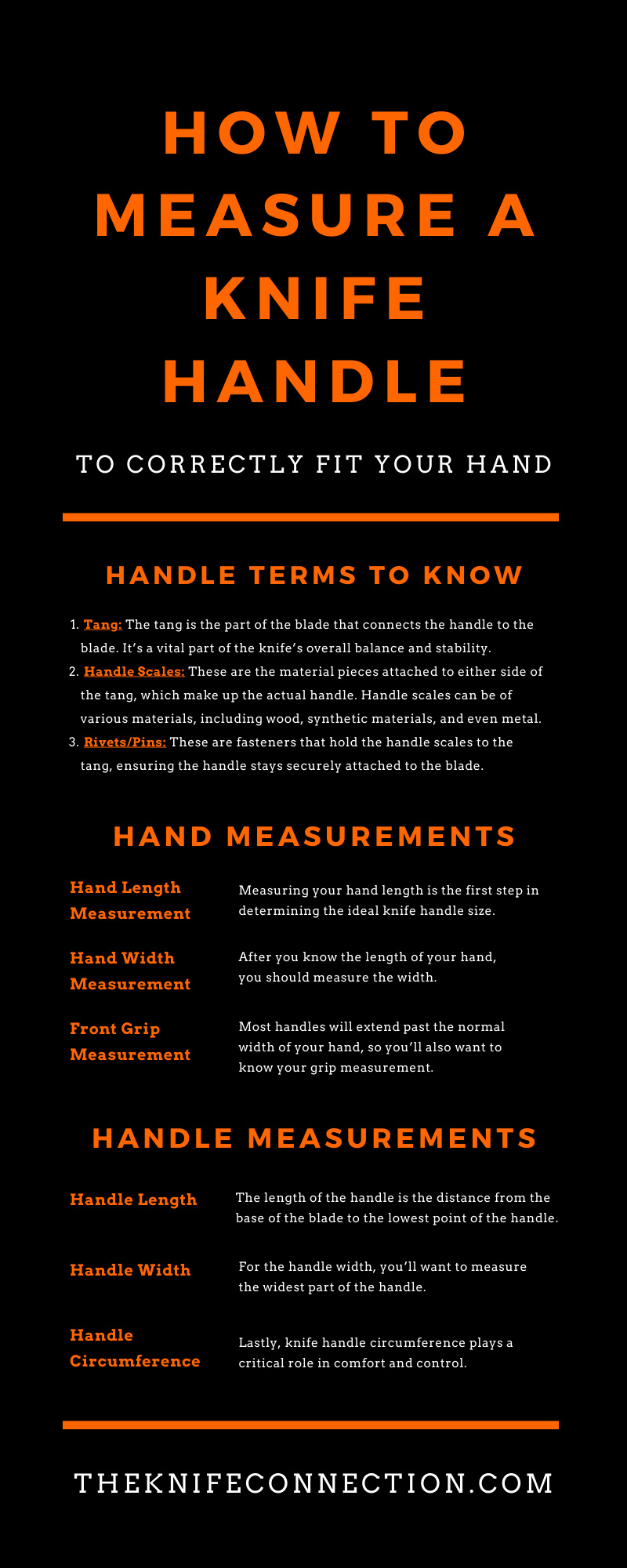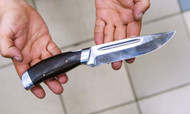How To Measure a Knife Handle To Correctly Fit Your Hand
Sep 22 2023 - 8:25
Comfort and safety are of utmost importance when using a knife. Most people tend to focus on safety, but having a knife handle that fits your hand correctly can help ensure both safety and comfort.
If you’re unsure how to get a secure grip with a knife, this post is here to help. In it, we’ll guide you through how to measure a knife handle to correctly fit your hand, along with some other relevant things you should know about handle size. By the end of this guide, you will know exactly what to look for in a knife handle.
Why Handle Sizes Are Important
Before we get into the measurements you need for your handle, you should know why you need to figure them out. A knife handle that doesn’t feel comfortable in your hand can lead to less control, more strain, and an increased risk of accidents.
By taking accurate measurements and understanding what works best for your hand size, you can enjoy a more secure grip, better control, and reduced fatigue during long cutting sessions. On top of helping you be safer with your knife, a secure grip will also make it easier and more enjoyable to use.
Handle Terms To Know
Before delving into measurements, you need to know what all the parts of a handle are. That means we need to discuss some common terms related to knife handles and their components.
- Tang: The tang is the part of the blade that connects the handle to the blade. It’s a vital part of the knife’s overall balance and stability. Full-tang knives have a tang that runs the entire length of the handle, while partial-tang knives have a tang that extends only a portion of the way into the handle.
- Handle Scales: These are the material pieces attached to either side of the tang, which make up the actual handle. Handle scales can be of various materials, including wood, synthetic materials, and even metal.
- Rivets/Pins: These are fasteners that hold the handle scales to the tang, ensuring the handle stays securely attached to the blade.
Hand Measurements
To make your handle measurements useful, you first need to determine the size of your hand. Since every hand is different in terms of how it moves and grips onto objects, you’ll need a few different measurements to achieve the best results.
Hand Length Measurement
Measuring your hand length is the first step in determining the ideal knife handle size. This measurement will help dictate the necessary circumference of your knife handle, which will ensure a comfortable and secure grip on the knife. Here’s how you measure hand length:
- Lay the back of your hand flat on a table, with fingers extended and close together.
- Measure the distance from the tip of your middle finger to the crease at the base of your palm.
- Record the measurement in both inches and centimeters.
Hand Width Measurement
After you know the length of your hand, you should measure the width. This will help you figure out which handle length will be most appropriate for you. Fortunately, you can do this as you measure your hand’s length by following these steps:
- Keep the back of your hand flat on a table, with fingers extended and close together.
- Measure the distance across your palm at its widest point—typically just below your fingers.
- Record the measurement in both inches and centimeters.
Front Grip Measurement
Most handles will extend past the normal width of your hand, so you’ll also want to know your grip measurement. This is essential for ensuring efficiency and control during use. This is how you measure your front grip:
- Wrap a flexible measuring tape or string around your hand, just below your fingers.
- Carefully tighten the measuring tape or string to be firm but comfortable around your hand.
- Mark a point on the tape or string and record the measurement in both inches and centimeters.
Handle Measurements
You don’t have your new knife yet, but measuring the size of your current knife’s handle is the best way to ensure it fits your hand well. Even though different knives use various types of handles, getting an idea of what already works will help you compare sizes to the handles you find online, such as our Esee Micarta scales and handles.
Handle Length
The length of the handle is the distance from the base of the blade to the lowest point of the handle. Generally, the handle length should be slightly longer than your hand width measurement to ensure a comfortable grip.
Handle Width
For the handle width, you’ll want to measure the widest part of the handle. Most handles vary in width depending on where you measure it. Measuring the largest section of it will help enable you to hold the knife comfortably and securely without feeling cramped or unstable. A slightly wider handle may provide increased stability for people with larger hands, while a narrower handle may be more comfortable for people with smaller hands performing more delicate tasks. However, this varies based on personal preference.
Handle Circumference
Lastly, knife handle circumference plays a critical role in comfort and control. In most cases, this is more important than width. To measure the circumference, use a flexible measuring tape or a piece of string and wrap it around the largest part of the handle. Getting this part right will help ensure the most comfortable grip possible.
Other Things You Should Know About Handle Size
Even though you understand how to measure a knife handle to correctly fit your hand, there are still a few things you should know about before purchasing your new knife. First is the handle material. The choice of handle material can significantly impact grip and comfort. Materials such as G-10, Micarta, and textured rubber offer excellent grip, while polished materials like bone or metal may be more slippery in wet conditions. That means even though you might have gotten your measurements right, you could still run into some issues when using your knife.
Also, be sure to consider the handle’s shape. Every knife has a different design that could impact how you hold it. Be sure to look for a handle shape that provides good ergonomics and contours to help your hand stay comfortable and reduce fatigue. As long as you keep these things in mind, you shouldn’t run into any issues when using your new knife.

